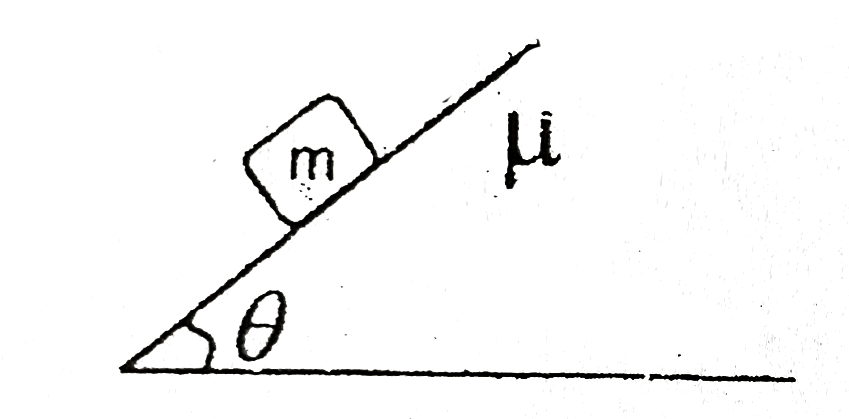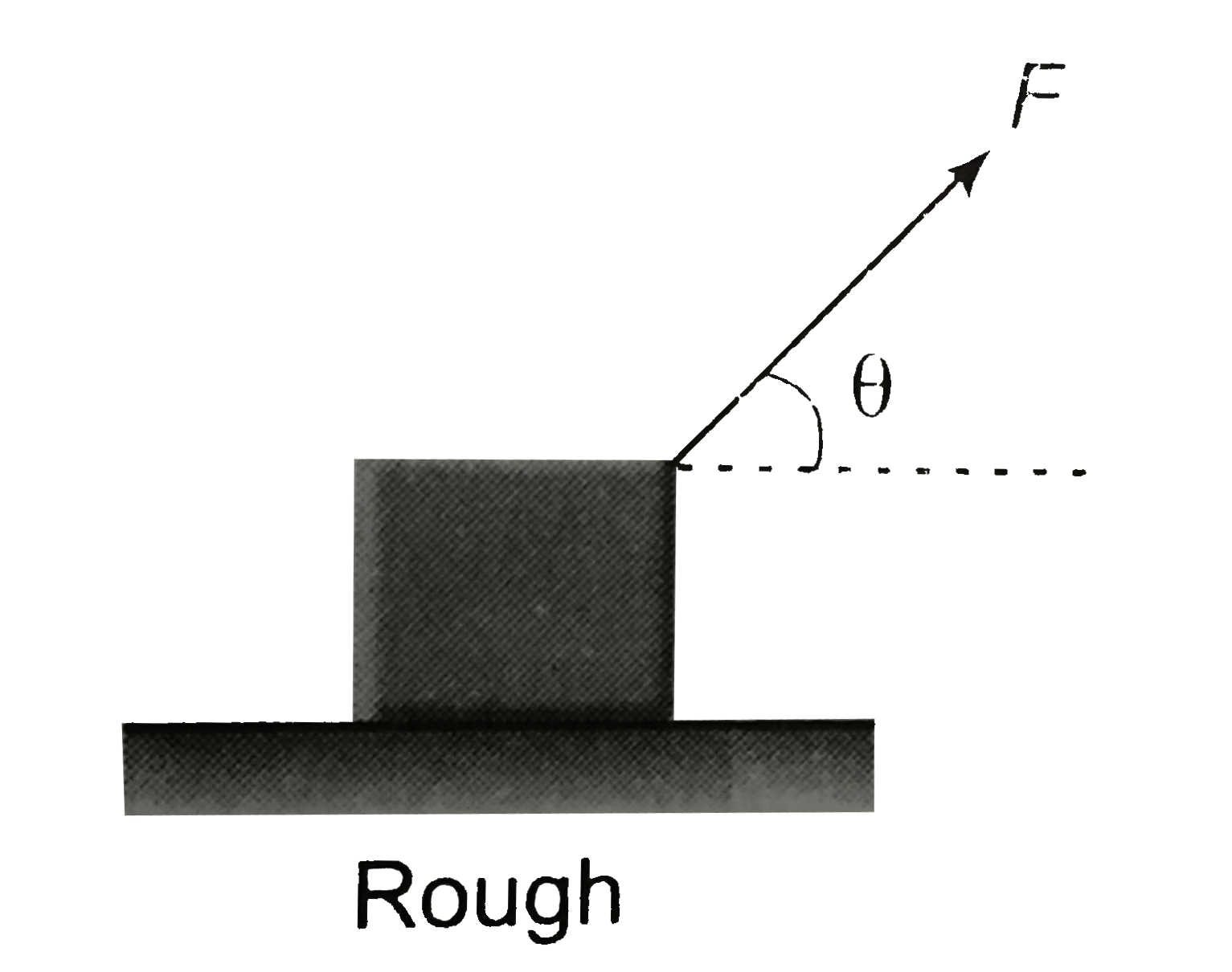Why is a force needed to keep a block of wood inside water?
The correct Answer is:upthust due to water on block when fully submerged inmore than its weight.
To understand why a force is needed to keep a block of wood submerged in water, we can analyze the forces acting on the block:
1. Identify the Forces Acting on the Block:
- The block of wood experiences two main forces when submerged in water:
- The weight of the wood acting downwards (due to gravity).
- The buoyant force acting upwards (due to the displacement of water).
2. Calculate the Weight of the Wood:
- The weight of the wooden block can be calculated using the formula:
Weight of wood=ρwood×V×g
where:
- ρwood is the density of the wood,
- V is the volume of the wood,
- g is the acceleration due to gravity.
3. Calculate the Buoyant Force:
- The buoyant force acting on the wood can be calculated using Archimedes' principle:
Buoyant force=ρwater×V×g
where:
- ρwater is the density of water.
4. Determine the Net Force:
- The net force acting on the block can be expressed as:
Fnet=Weight of wood−Buoyant force
- Substituting the expressions from steps 2 and 3:
Fnet=(ρwood×V×g)−(ρwater×V×g)
- This simplifies to:
Fnet=(ρwood−ρwater)×V×g
5. Analyze the Sign of the Net Force:
- Since the density of wood (ρwood) is less than the density of water (ρwater), the term (ρwood−ρwater) will be negative.
- This indicates that the net force Fnet is directed upwards, meaning the buoyant force is greater than the weight of the wood.
6. Conclusion:
- To keep the block of wood submerged in water, an additional downward force must be applied to counteract the upward buoyant force. This is why a force is needed to keep the block of wood inside the water.
- The block of wood experiences two main forces when submerged in water:
- The weight of the wood acting downwards (due to gravity).
- The buoyant force acting upwards (due to the displacement of water).
- The weight of the wooden block can be calculated using the formula:
Weight of wood=ρwood×V×g
where:
- ρwood is the density of the wood,
- V is the volume of the wood,
- g is the acceleration due to gravity.
- The buoyant force acting on the wood can be calculated using Archimedes' principle:
Buoyant force=ρwater×V×g
where:
- ρwater is the density of water.
- The net force acting on the block can be expressed as:
Fnet=Weight of wood−Buoyant force
- Substituting the expressions from steps 2 and 3:
Fnet=(ρwood×V×g)−(ρwater×V×g)
- This simplifies to:
Fnet=(ρwood−ρwater)×V×g
- Since the density of wood (ρwood) is less than the density of water (ρwater), the term (ρwood−ρwater) will be negative.
- This indicates that the net force Fnet is directed upwards, meaning the buoyant force is greater than the weight of the wood.
- To keep the block of wood submerged in water, an additional downward force must be applied to counteract the upward buoyant force. This is why a force is needed to keep the block of wood inside the water.
Topper's Solved these Questions
- BOOK - ICSECHAPTER - UPTHRUST IN FLUIDS, ARCHIMEDES' PRINCIPLE AND FLOATATIONEXERCISE - EXERCISE 5(A) (Multiple Choice Question)3videos
UPTHRUST IN FLUIDS, ARCHIMEDES' PRINCIPLE AND FLOATATION
- BOOK - ICSECHAPTER - UPTHRUST IN FLUIDS, ARCHIMEDES' PRINCIPLE AND FLOATATIONEXERCISE - EXERCISE 5(A) (Numerical)10videos
UPTHRUST IN FLUIDS, ARCHIMEDES' PRINCIPLE AND FLOATATION
- BOOK - ICSECHAPTER - UPTHRUST IN FLUIDS, ARCHIMEDES' PRINCIPLE AND FLOATATIONEXERCISE - EXERCISE 5(c) (Numerical)9videos
UPTHRUST IN FLUIDS, ARCHIMEDES' PRINCIPLE AND FLOATATION
- BOOK - ICSECHAPTER - SOUNDEXERCISE - TOPIC 2 Infrasonic and Ultrasonic Waves ( 3 Marks Questions)3videos
SOUND
Similar Questions
Knowledge Check
- Question 1 - Select One
A force is needed to:
Achange the state of motion or state of rest of the bodyBkeep the body in motionCkeep the body stationaryDkeep the velocity of body constant.
Find the minimum force required to keep a block of mass m in equilibrium on a rough inclined plane with inclination α and coefficient of friction μ(<tanα).
View SolutionWhat is the net force on a piece of wood floating on water?
View SolutionA block of mass 2kg is lying on a rough inclined plane. The force needed to move the block up the plane with uniform velocity by applying a force parallel to the plane is 100N. The force needed to move the block up with an accele-ration of 2ms−2 is
View SolutionIf tan0>μ then minimum force needed to stay block at rest is
 View Solution
View SolutionMinimum force is needed to move a block on rought surface, if θ= angle of friction.
Angle of friction and angle of repose are numerically same.
 View Solution
View SolutionA block of mass 5kg is placed on a rough horizontal plane whose coefficient of friction is 0.3. Find the least horizontal force needed to move the block along the plane and the resultant of normal reaction and the force applied.
View SolutionA block of mass M is kept on as rough horizontal surface. The coefficient of static frictionbetween the block and the surface is μ. The block is to be pulled by applying a force to it. What minimum force is needed to slide the block? In which direction should this force act?
View Solution

